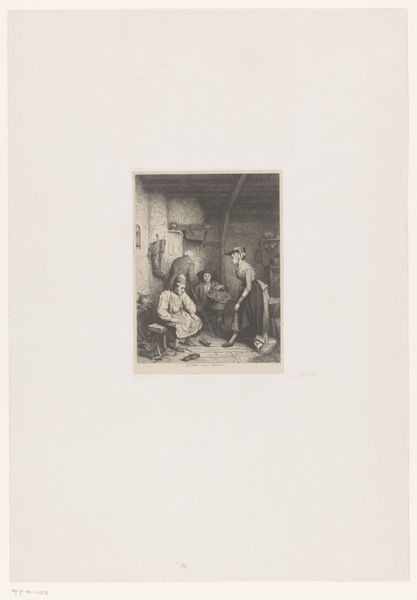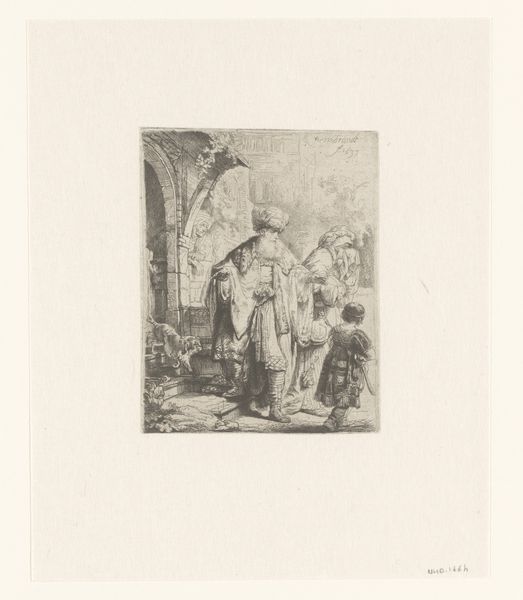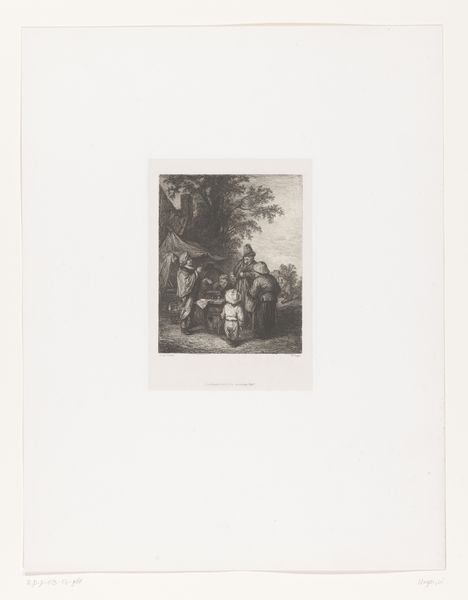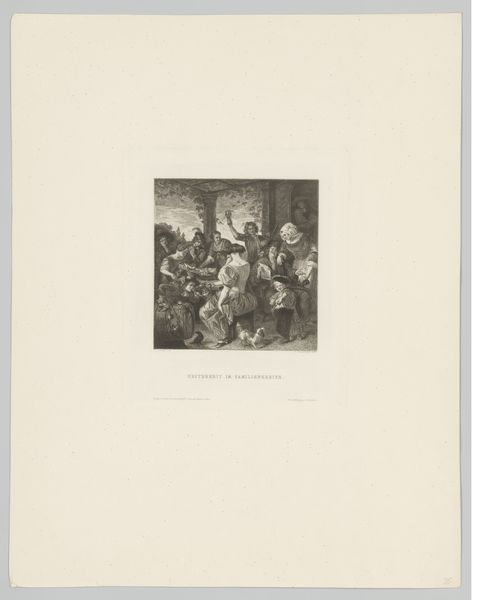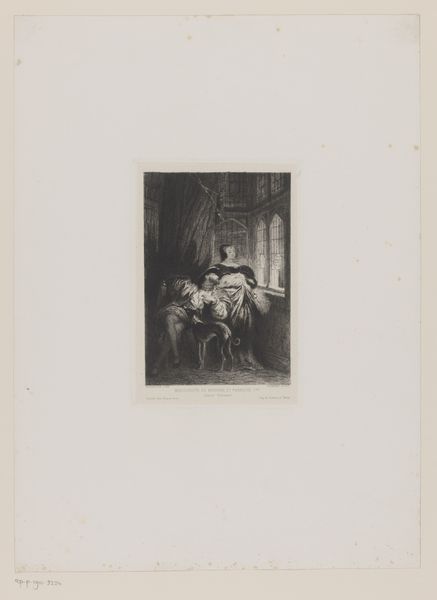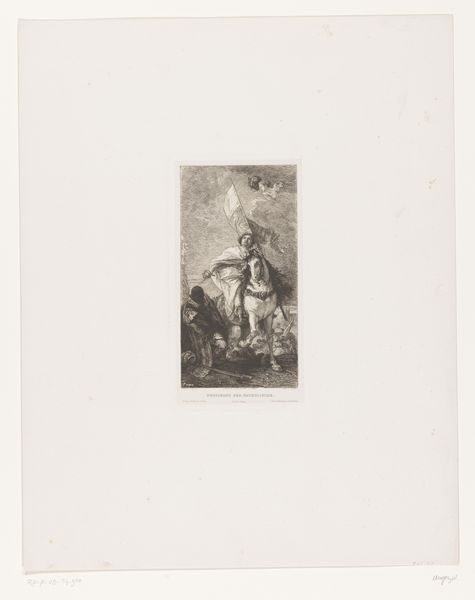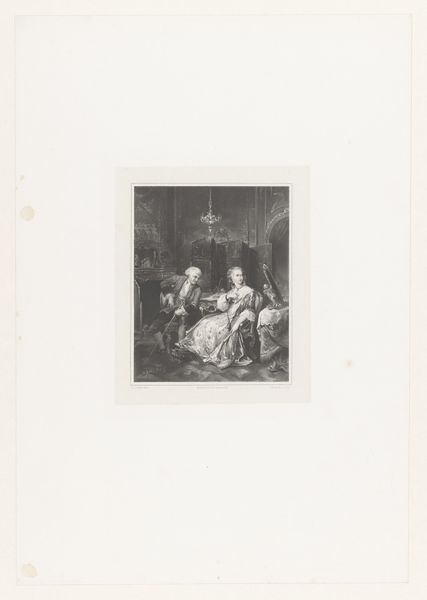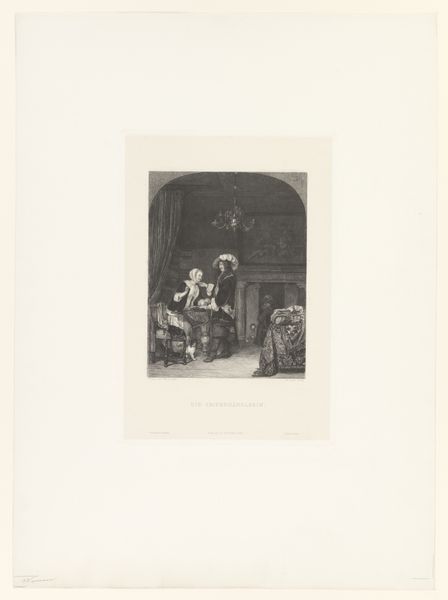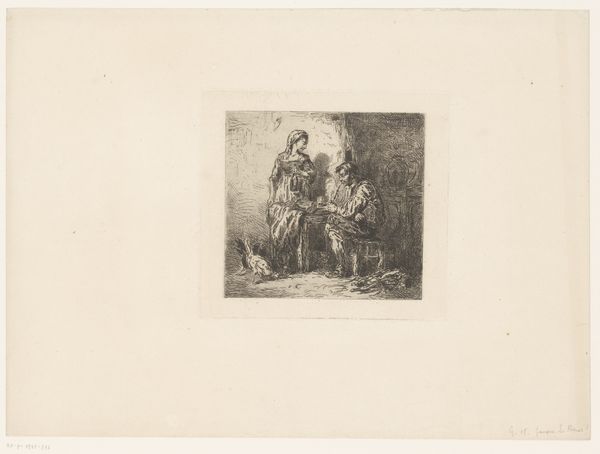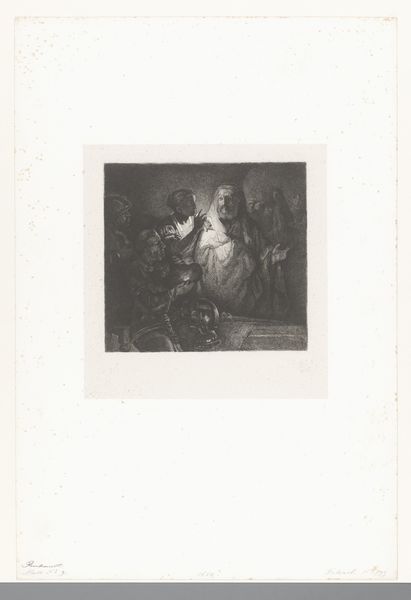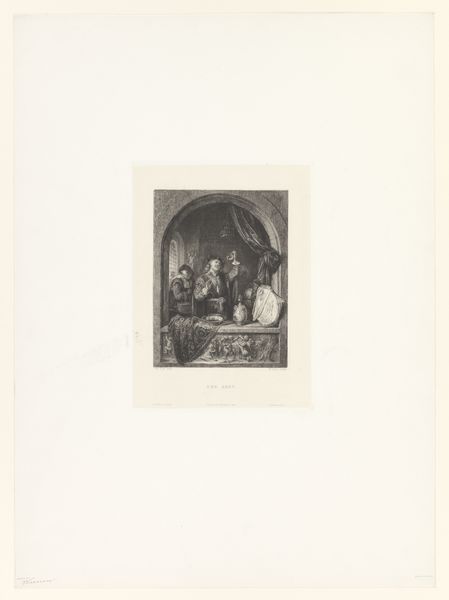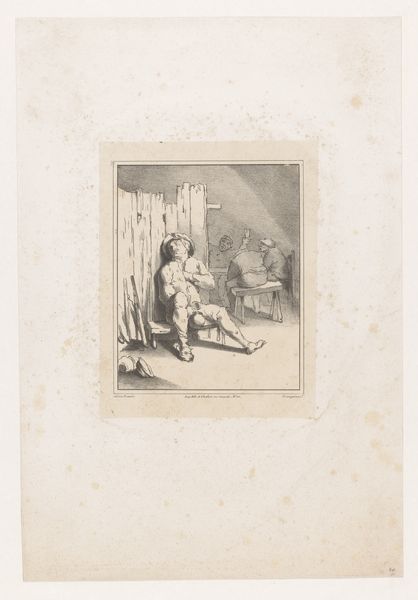
print, etching
# print
#
etching
#
genre-painting
#
realism
Dimensions: height 268 mm, width 219 mm
Copyright: Rijks Museum: Open Domain
Curator: Here we have William Unger's print, "Interior with a Woman Feeding a Parrot," created sometime between 1847 and 1889. The medium is etching. Editor: It’s…domestic, isn’t it? Rather dark. The hatching and cross-hatching give it an almost oppressive weight, even though it depicts an everyday scene. There is a woman feeding a parrot in the midst of some male courtiers, yet everything seems dimmed, quiet. Curator: Consider the etching process. The labor involved, the careful manipulation of the metal plate, the acid, the pressure of the printing press... this print is reproducible. Think about how these images became more accessible than a unique painting, shaping a wider social consciousness and creating new modes of visual engagement within different economic levels. Editor: That’s a fascinating point. It’s an intimate snapshot, yes, but that intimacy is curated, isn't it? Unger wasn't in that room, observing; he re-presented an existing scene for mass consumption. Also, that woman stands alone among several men, perhaps indicating her subservient role to patriarchal ideals, while her "parrot" serves as a pretty pet confined in her gilded cage... or am I pushing it? Curator: Not at all. The placement of the birdcage hanging in the center almost mocks the female's limited liberty, creating interesting dialogues on freedom, desire, and captivity. Note also how Unger manipulates shadow and light; what social message are you ascribing in his work about gender roles in his social and historical moment? Editor: These interiors, ostensibly about simple pleasures, often masked subtle social critiques. The woman and the bird become symbolic, and their intertwined narratives reflect broader societal limitations imposed on women. This piece creates space to contemplate not just the visual language of realism, but its engagement with contemporary issues through layered, sometimes contradictory, imagery. Curator: Indeed. And by etching, the possibility of multiples offers accessibility to these social themes at different economic levels. Something unique in terms of disseminating progressive ideas about women to other segments of society beyond the high class. Editor: Precisely. So, this isn’t just a picture of a woman and a bird. It's about the cultural machinery that frames them. The layers of social hierarchy, gender expectation, and the subtle means of both capturing and displaying "beauty" within certain strictures of freedom. Curator: So, looking closely at this seemingly simple genre-painting-turned-print provides multiple points to consider—both the technical production and material creation as well as broader political and cultural statements that are not necessarily explicit at first sight. Editor: An important reminder of art's ability to reveal both obvious and discreet forms of human understanding in their own eras.
Comments
No comments
Be the first to comment and join the conversation on the ultimate creative platform.
